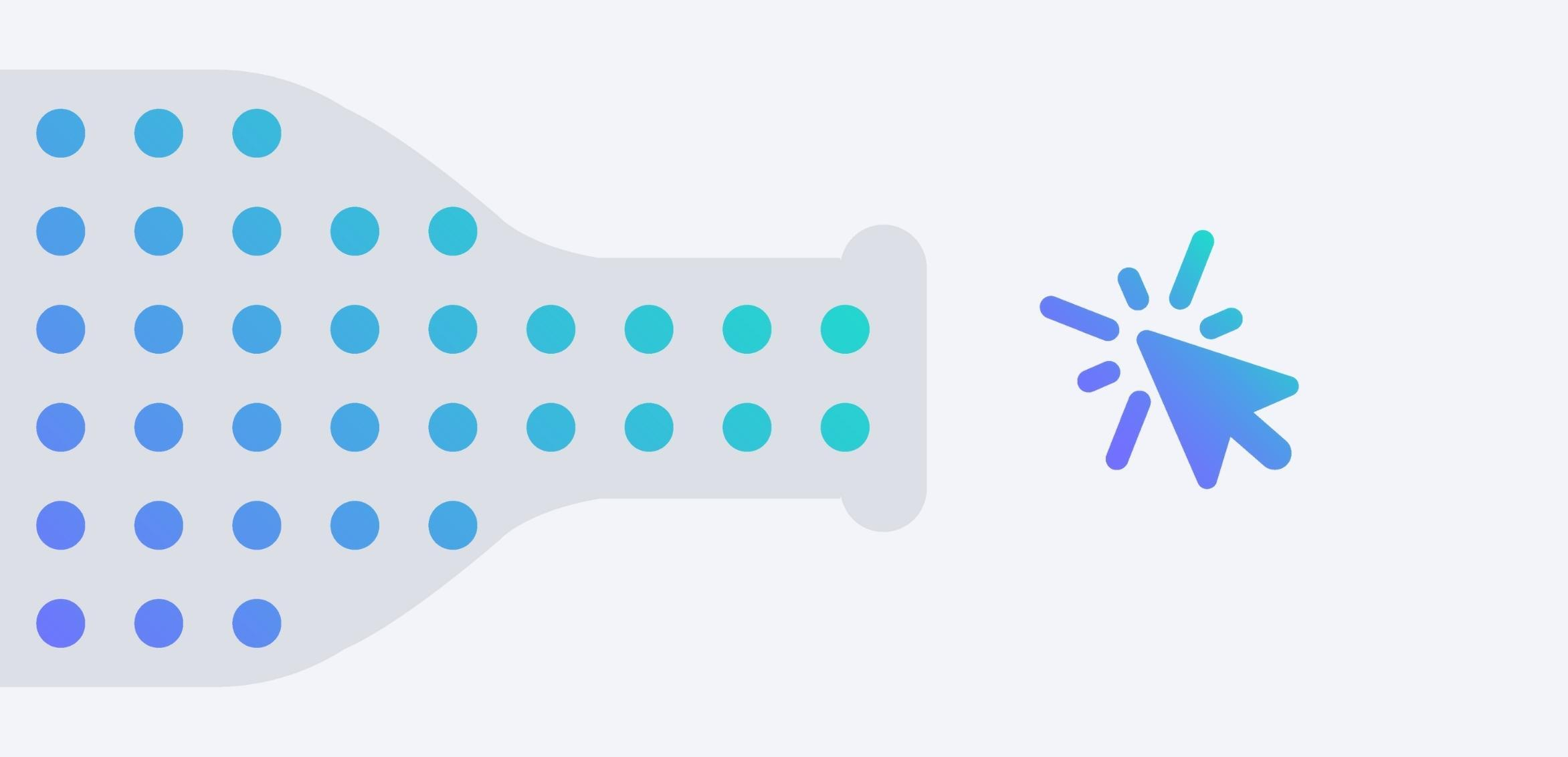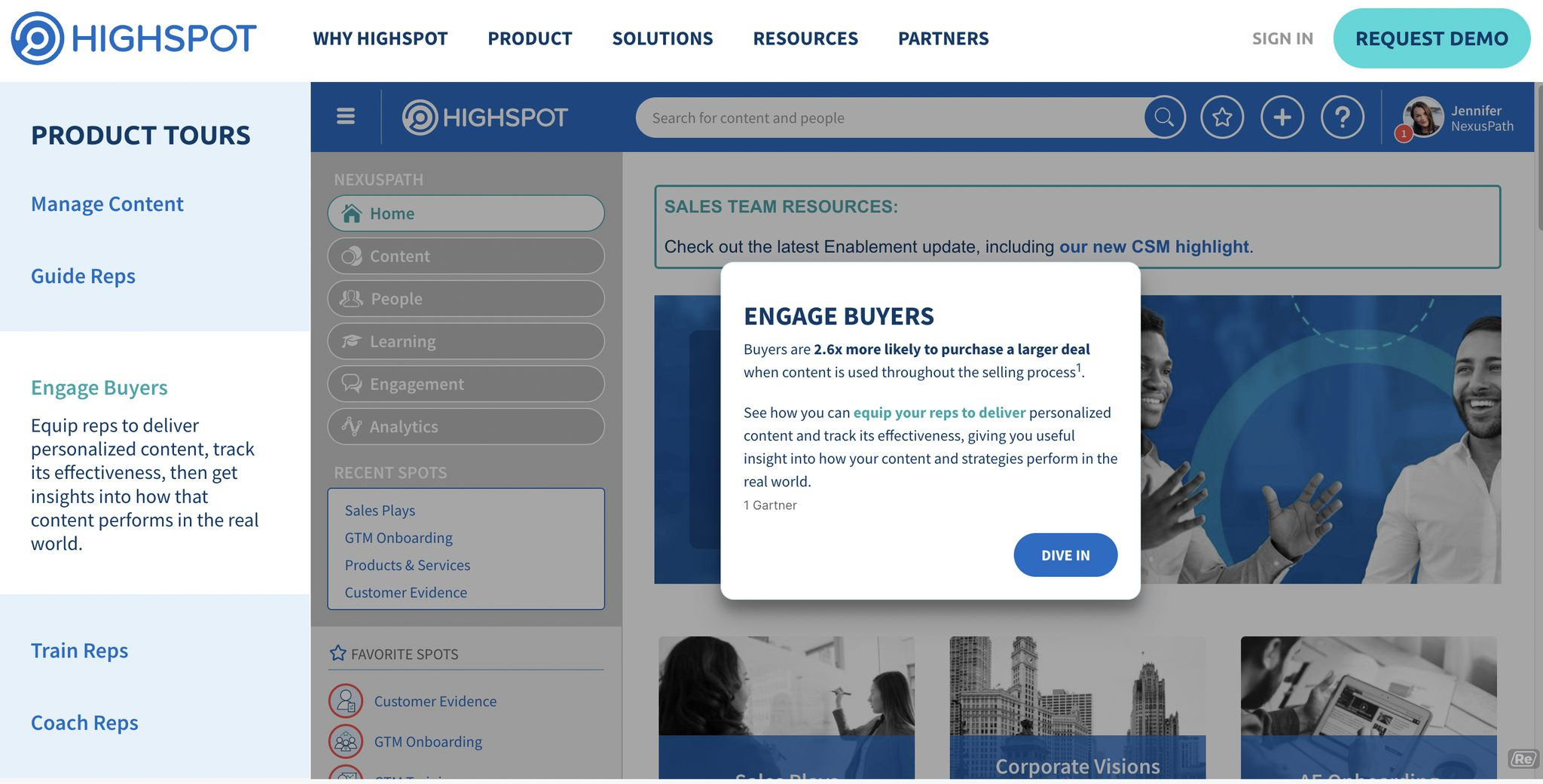Accelerate deals and increase win rates with the leading enterprise demo platform.
How to solve the SaaS demo demand bottleneck to win more deals

April 23, 2025
Table of Contents
“Can I just get a demo of your product?”
This question runs a shiver down the spine of sales leaders and SE leaders alike.
Yes, it’s thrilling that prospects want to see your product. And that you can use that interest to sell your product (that’s what product-led growth is all about).
But that demand for very early-stage product demos causes a whole big bottleneck for B2B SaaS companies right now. It’s even sabotaging the sales process in many cases — not to mention, pissing off a lot of buyers.
The solution is not giving product demos faster and faster to try and keep up with the increasing demand from buyers.
That just puts you on a hamster wheel, running faster and faster, going nowhere until you do that sad but cute little hamster flip off the wheel. (It’s less cute when it’s your sales cycle tumbling and your SEs flipping.)
Here’s what you need to do instead to handle the high demand for SaaS demos in today’s buyer environment.
What the Demo Demand is Doing to Your Sales
Everyone is struggling to keep up with the relentless demand for demos in earlier and earlier stages of the sales cycle. Buyers today are impatient and want to see what you have now. They want to buy software the same way they do with their B2C purchases — product-led and frictionless.
And it’s hard to say no—demos are crucial when selling software products. Buyers aren’t demanding demos because they’re trying to make your life harder.
Buyers simply want to experience what a product feels like before they’re committed to a series of sales calls and then cutting a big check. Not to mention, they’ve been burned in the past when buying software and want to take back control. Today’s buyer is tech-savvy and they know what they want—no wonder 50% say demos are one of the most valuable materials in the buying process.
And buyers want to self-educate. According to Gartner, your sales reps have roughly 5% of a customer’s time during their B2B buying journey. This demo request might be one of your only touchpoints with the customer—you don’t want to waste it.
But even though they have good reasons for wanting a demonstration of your product right away, that doesn’t mean giving them one is feasible given your current circumstances.
The problem with early-stage demo demand
For one, it can slow down your sales process because your technical resources simply can’t keep up with that kind of demand. You only have so many SEs, and they only have so many hours in the day. If serious buyers need to wait a week or more to get a demo, your deals are going to take longer to close (and most will likely head to a competitor out of frustration).
And (quite reasonably) your SEs don’t like spending most of their time and expertise on generic or unqualified demos. It’s actually a big reason for the high SE turnover. SEs want to focus on problem-solving and building more mature demos for better-qualified buyers.
So to find a solution, you first need to ask the right question.
Don’t ask yourself:
“How do we do more demos, more quickly?” Trying to tackle that is just an exercise in doing more of the wrong things, more often.
Do ask yourself:
✅ “How do we do fewer wasted sales demos and more qualified, high-impact demos?”
✅ “How do we help buyers qualify themselves in or out on their own?”
How to solve the product demo demand bottleneck
You know how you can walk into an Apple Store any time it’s open and try out anything they sell right there, whether or not you’re planning on making a purchase that day?
Maybe you’re just considering buying a new tablet, or maybe you’re ready to purchase one right then and there. But they have set up the store so you can explore without taking up the time of their sales pros until you’re actually serious about buying something or needing help. And their products have little guided tours on them so you can see what they can do without human help.
Well, what if I told you you can create a virtual version of the Apple Store on your website? (The Geniuses are optional.)
A simple two-part solution
1. Put interactive self-guided demos on your website
Buyers want to first experience your product for themselves without talking to a single rep. According to Gartner, 45% of a buyer’s time is spent researching independently. Giving buyers the keys to the car allows them to get a feel for the product and gives them an opportunity to qualify themselves in or out.
By incorporating interactive guided tours on your website, you’re enabling today’s tech-savvy product-led buyers with the buying experience they desire.
Pro tip: Create an interactive demo that is built out into chapters. These chapters could be broken out by industry, persona, use case, feature, and so on.
Highspot, a sales enablement platform that makes every customer conversation count, is an excellent example of using chapters effectively in their website product tours.
These interactive mini product demos make it frictionless for buyers to self-educate and choose their own adventures.
2. Create a demo library of reusable interactive demos
Imagine that the buyer has already seen and experienced a general interactive product tour on your website to familiarize themselves with your solution.
Think of this as PLG-lite; you’re giving them just enough sugar to reach an “aha!” moment, so they want more on a sales demo — no need for a free trial here.
Now, pre-demo, a sales rep can email over an even more personalized guided interactive demo experience — allowing the prospect to self-educate further or even another chance to qualify themselves out.
*Sending a pre-call demo is especially useful if the prospect never got a chance to experience the product tour on your website before requesting the demo.
The sales rep can choose the most relevant pre-made demo from their demo library to send. Each guided demo in the demo library should serve a specific purpose. For example, Reprise customers typically create demos around:
- One or more buyer personas
- A specific use case
- Customized by Vertical
- New or complex features
- Apps & Integrations
- Analytics
With a demo creation platform, sales reps can then personalize variables on these pre-made demos, such as the prospect’s name, company, and more, in seconds.
As a result, your prospect comes to the call with an even better understanding of your product, and they’re getting that demo they asked for when they want it. Once you’ve identified more of their needs, you can have an SE deliver a more mature demo on the next call.
By having pre-made demos in a demo library, you save SE resources from having to make a custom demo for every call and getting pulled into the sales process too early.
This is demo automation at its finest. You save your company’s resources while still meeting today’s buyers where they are.
And the reality is, the buying experience matters more than ever. According to Salesforce, 84% of customers say their experience with a vendor is as important as its products and services.
So let’s stop forcing customers to fit into how we want them to buy and instead sell software the way customers want to buy!
Find the right demo creation platform
There are a few demo creation tools out there, but only Reprise allows you to create both live sales demos and guided interactive ones. We help you create reusable demo assets so you can scale your sales and presales resources and accelerate your sales cycles.
Bust open those demo bottlenecks — see Reprise in Action








